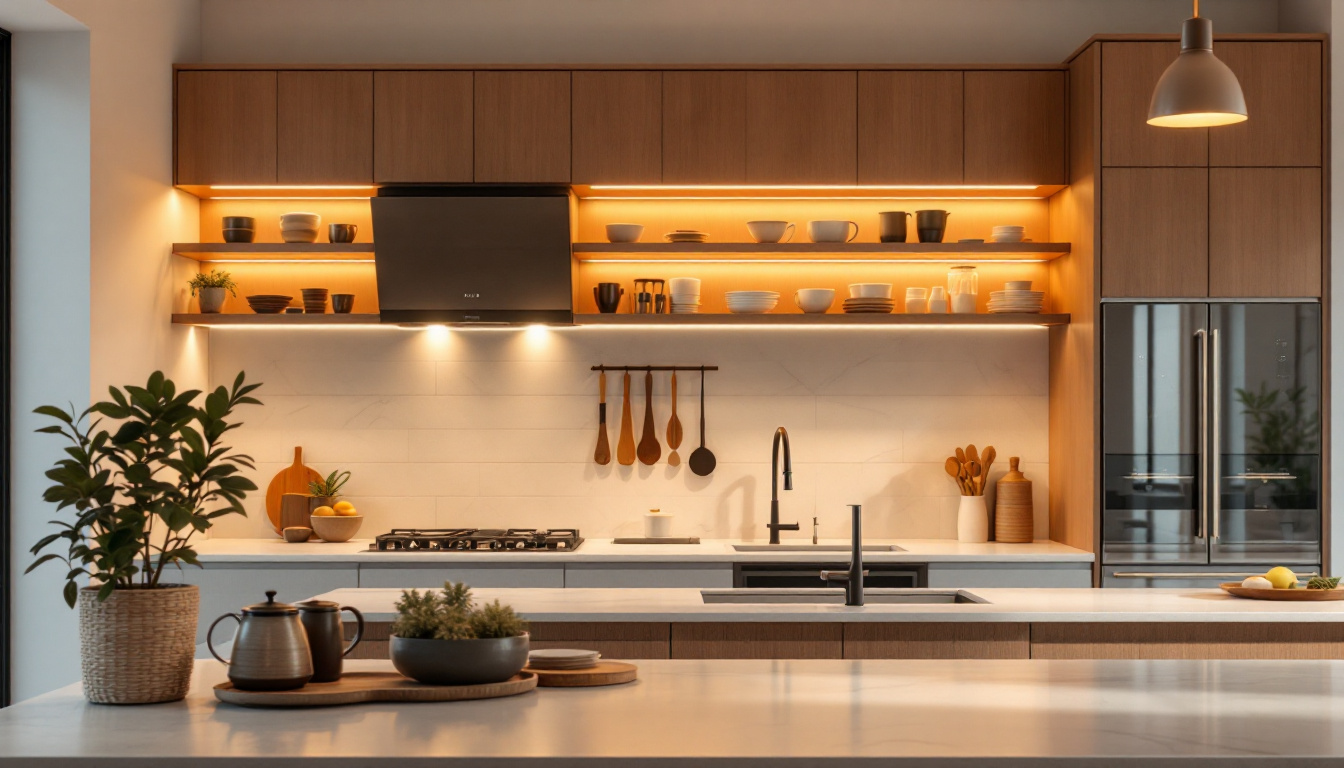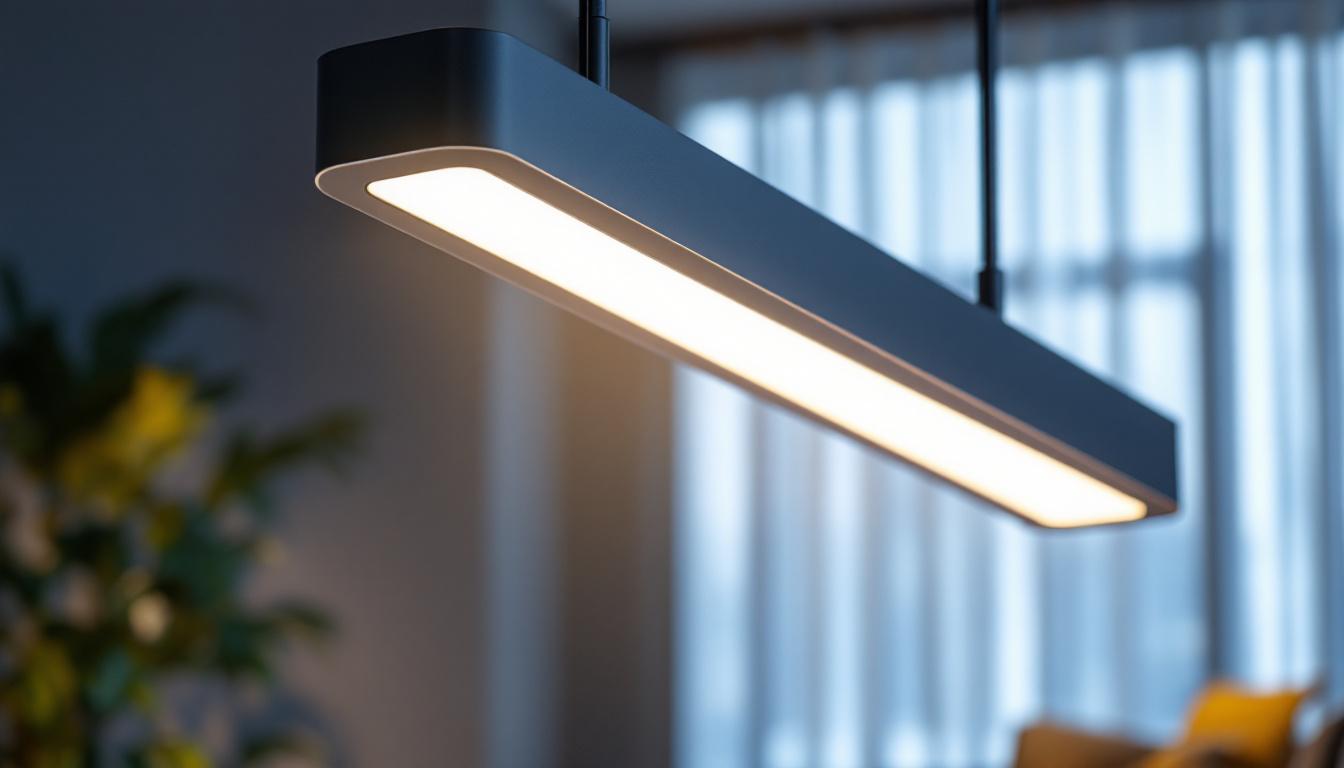
Kitchen canned lighting: The Secret to Better Lighting Designs
In the realm of interior design, particularly in kitchens, lighting plays a pivotal role in creating an inviting atmosphere and enhancing functionality. Among the various lighting options available, canned lighting, also known as recessed lighting, has emerged as a popular choice for homeowners and designers alike. This article delves into the benefits, design considerations, and installation tips for kitchen canned lighting, offering insights that lighting contractors can leverage to elevate their projects.
Canned lighting refers to fixtures that are installed into the ceiling, providing a clean and unobtrusive look. These fixtures are available in various sizes and styles, making them versatile enough to suit different kitchen designs. Their ability to blend seamlessly into the ceiling allows for a more open and spacious feel, which is particularly beneficial in kitchens where space is often at a premium. Moreover, the sleek design of canned lighting contributes to a modern aesthetic, enhancing the overall decor while ensuring that the focus remains on the kitchen’s functional elements.
There are several types of canned lighting fixtures available, each designed for specific applications. The most common types include:
The advantages of incorporating canned lighting into kitchen designs are numerous. First and foremost, they provide excellent ambient lighting, which is essential for cooking and food preparation. Additionally, they can be used to create layered lighting effects when combined with other types of fixtures, such as pendant lights or under-cabinet lighting.
Another significant benefit is energy efficiency. Many canned lighting fixtures now come equipped with LED bulbs, which consume less energy and have a longer lifespan compared to traditional incandescent bulbs. This not only reduces energy bills but also decreases the frequency of bulb replacements, making them a cost-effective choice in the long run. Furthermore, the lower heat output of LED bulbs contributes to a cooler kitchen environment, which is particularly advantageous during warm cooking sessions.
Beyond their functional benefits, canned lighting also offers a level of design flexibility that can enhance the aesthetic appeal of a kitchen. With the ability to choose from different trim styles and finishes, homeowners can customize their lighting to match their personal taste and the overall theme of the kitchen. Whether opting for a sleek, contemporary look or a more traditional feel, the right choice of canned lighting can elevate the space, creating an inviting atmosphere that is both stylish and practical. Additionally, the strategic placement of these fixtures can help to eliminate shadows and dark corners, ensuring that every part of the kitchen is well-lit and welcoming.
When designing a kitchen with canned lighting, several factors must be taken into account to ensure optimal results. Proper placement, spacing, and the selection of the right fixtures are all crucial elements that can significantly affect the overall lighting quality.
One of the most critical aspects of canned lighting design is determining where to place the fixtures. A common rule of thumb is to space the lights approximately 4 to 6 feet apart, depending on the brightness desired and the size of the kitchen. In areas where more focused light is needed, such as over countertops or islands, fixtures can be placed closer together.
It is also essential to consider the height of the ceiling. Higher ceilings may require more fixtures or fixtures with higher wattage to ensure adequate illumination. Conversely, lower ceilings may benefit from fixtures that provide a softer glow to avoid overwhelming the space.
Layering light is a fundamental principle in effective lighting design. Canned lighting can serve as a foundation for a layered approach, which includes ambient, task, and accent lighting. Ambient lighting provides overall illumination, while task lighting focuses on specific areas where activities such as cooking or reading take place. Accent lighting, on the other hand, highlights particular features, such as decorative elements or architectural details.
By strategically combining these different types of lighting, a kitchen can achieve a well-balanced and visually appealing atmosphere. For instance, using canned lighting in conjunction with under-cabinet lights can create a bright workspace while maintaining a warm and inviting ambiance in the rest of the room.
For lighting contractors, understanding the installation process of canned lighting is crucial to delivering high-quality results. Proper installation not only ensures safety but also maximizes the effectiveness of the lighting design.
Before installation, it is vital to assess the existing electrical system and determine the best approach for wiring the fixtures. This may involve running new electrical lines or utilizing existing circuits. Contractors should ensure that the circuit can handle the load of the new fixtures, particularly if LED bulbs are not being used.
Additionally, it is essential to follow local building codes and regulations regarding electrical installations. This includes ensuring that all wiring is properly insulated and that fixtures are securely mounted to prevent any hazards.
Before finalizing the installation, creating a mockup can be incredibly beneficial. This involves temporarily placing the fixtures in their intended locations to assess their effectiveness and make any necessary adjustments. A mockup allows contractors to visualize the lighting design and ensure that it meets the homeowner’s expectations.
Moreover, it provides an opportunity to test the brightness and angle of the fixtures, ensuring that they will adequately illuminate the desired areas without creating harsh shadows or overly bright spots.
Even experienced lighting contractors can make mistakes when it comes to installing canned lighting. Being aware of common pitfalls can help ensure a successful project.
One of the most frequent mistakes is either overlighting or underlighting a space. Overlighting can create a harsh and uninviting atmosphere, while underlighting can lead to safety hazards in the kitchen. It is crucial to strike the right balance by carefully calculating the number of fixtures needed based on the kitchen’s size and layout.
Using a combination of different lighting types can help achieve the desired effect without overwhelming the space. For example, supplementing canned lights with pendant fixtures over an island can provide both task and ambient lighting without creating an overly bright environment.
The color temperature of the bulbs used in canned lighting can significantly impact the overall feel of the kitchen. Warmer tones (around 2700K to 3000K) create a cozy and inviting atmosphere, while cooler tones (above 3000K) can make the space feel more sterile and clinical.
Contractors should consider the overall design theme of the kitchen when selecting the color temperature. A warm light may be more suitable for traditional or rustic kitchens, while cooler tones may complement modern or minimalist designs.
As technology continues to evolve, integrating smart lighting solutions into kitchen designs has become increasingly popular. Smart canned lighting allows homeowners to control their lighting remotely, adjust brightness levels, and even change color temperatures using a smartphone or voice commands.
The primary advantage of smart canned lighting is the convenience it offers. Homeowners can easily adjust their kitchen lighting based on the time of day or the activities taking place. For example, bright lighting may be preferred during meal prep, while a softer glow might be more suitable for evening gatherings.
Moreover, smart lighting can enhance energy efficiency by allowing users to set schedules or timers, ensuring that lights are only on when needed. This feature can lead to significant energy savings over time, making it an attractive option for environmentally conscious homeowners.
When installing smart canned lighting, contractors must ensure that the fixtures are compatible with the chosen smart technology. This may involve selecting specific bulbs or fixtures that can connect to a smart hub or directly to Wi-Fi.
Additionally, it is essential to educate homeowners on how to use their new smart lighting system effectively. Providing clear instructions and demonstrating the features can enhance the overall user experience and satisfaction with the installation.
Canned lighting is a powerful tool in the arsenal of lighting contractors, offering flexibility, efficiency, and aesthetic appeal in kitchen designs. By understanding the various types of fixtures, design considerations, and installation techniques, contractors can create stunning and functional kitchens that meet the needs of homeowners.
As the demand for innovative lighting solutions continues to grow, embracing the potential of canned lighting can set contractors apart in a competitive market. Whether through layering light, integrating smart technology, or simply ensuring proper installation, the secret to better lighting designs lies in the thoughtful application of canned lighting.
Ready to transform your kitchen designs with the efficiency, flexibility, and aesthetic appeal of canned lighting? Look no further than LumenWholesale, where we provide contractors with top-quality, spec-grade lighting products at unbeatable wholesale prices. Our extensive selection is designed to meet the highest industry standards, ensuring you get reliable, high-performance lighting for every project. With free shipping on bulk orders, you can stock up on premium lighting solutions at the best value — all without hidden fees or compromises. Elevate your lighting designs today by visiting Wholesale Lighting at the Best Value and discover the LumenWholesale difference.

Discover how the 4600 4 is revolutionizing the lighting industry with its innovative technology and energy efficiency.

Discover the essential aspects of Par lamps that lighting contractors frequently miss.

Discover how mastering outdoor residential lighting can elevate your business and secure more contracts.

Discover the crucial role patio lamps play in outdoor lighting projects and why lighting contractors should prioritize them.